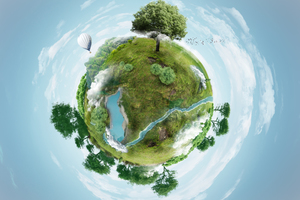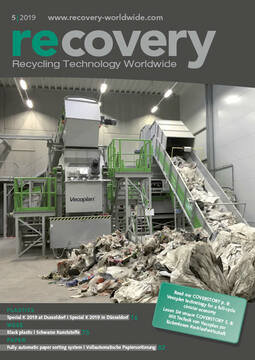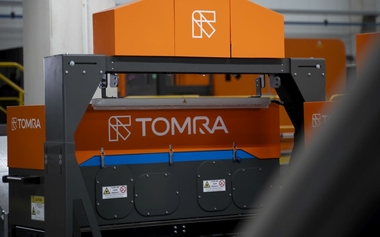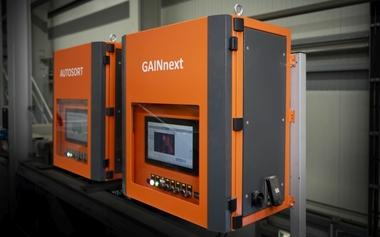Circular visions, small flakes and big data
Before this scenario TOMRA proposes stepping back from linear models and aligning with the reuse models of a truly circular economy. Unlike the currently dominant linear economy as per which products are made and thrown away after consumption, the circular economy targets the recovery of materials, which are efficiently brought back into the supply chain for being transformed into new products. Once consumed, products are not littered but collected by deposit systems, by curbside collection or by MRF sorting plants sorting diverse material for the subsequent recycling process. Following this concept, resources are kept in the loop while maintaining virgin like quality and extracting a maximum of the product’s value. Thus, waste is turned into value.
With the circular economy being a topic of considerable debate in the industry, systematic approaches are already being discussed to stimulate the change. New legislation mandating an improvement of recycling rates, market pulls and consumers demanding more sustainable products prove supportive in transforming theory into practice. Additional solutions are seen in the promotion of plastics collection, in stopping leakage through infrastructure and deposit systems as well as in manufacturing products that are regenerative and restorative by design.
In effect, these would be ideal solutions and processes that can only be realized with all stakeholders participating in the fight for a healthy environment and a sustainable, thriving economy.
TOMRA, being a key stakeholder and driver of this transformation to take place, promotes the circular economy by means of advanced collection and sorting systems that optimize resource recovery and minimize waste. Its sensor-based sorting solutions, such as AUTOSORT, AUTOSORT FLAKE and INNOSORT FLAKE, are well established solutions heading the sorting and reprocessing process within the plastic value chain.
Volker Rehrmann, Executive Vice-President TOMRA Recycling & Mining and Head of TOMRA Circular Economy, clearly states: “Continuing using our resources in an unsustainable and inefficient way should no longer be an option. At TOMRA, we take this global problem seriously and continuously develop new sorting solutions. At this year’s K-Show we will give an understanding of the circular economy and the role TOMRA and its products play in there.”
Sorting small
Displayed at K-Show, the INNOSORT FLAKE is a good example of positively impacting and purifying the recycling process. Since its launch at PRS Europe in Amsterdam in April 2019, it has shown to be the ideal dual-sorting solution for plastic recovery facilities, sorting plastic fractions from 2 to 12 mm by color and simultaneously by polymer types. Thus, vast proportions of contaminants can be removed and the potential loss of PET flake material significantly be reduced.
This all-in-one solution with ultra-high resolution and specialized sensor configuration offers superior performance with exponential results. It’s an economically favorable sorting solution providing a quick return on investment and scalable flexibility.
Sorting smart
Besides delivering state-of-the-art sorting machines, TOMRA also focus on developing groundbreaking innovations advancing the sorting process even more. Based on the current possibilities to collect and manage large amounts of data and artificial intelligence strongly surfacing, TOMRA goes ahead with the development of a deep learning software for sensor-based sorting.
As a subset of machine learning and artificial intelligence, the deep learning software is in a position to learn individually from a sizeable amount of collected data, equaling or even outperforming sorting results achieved by humans and common machines. With the combination of deep learning models and TOMRA’s sorting solutions, objects that could previously not be separated can now be sorted with high purity levels. In this regard, deep learning is considered as a promising approach when it comes to addressing the increasing challenges in waste sorting, such as new waste streams, objects being detected but not successfully ejected or covered by other materials.
Continuous innovation and technological advancements for meeting today’s demands in the recovery and recycling process is essential for TOMRA.




